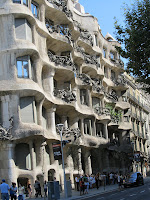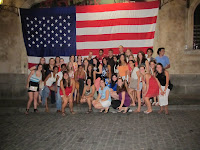 Zamora was quiet this weekend. Whether this is typical of the city or brought on by the fact that August is vacation time in Spain is immaterial. The silence that enveloped the city was enough to allow the whisper of her history to speak across the ages.
Zamora was quiet this weekend. Whether this is typical of the city or brought on by the fact that August is vacation time in Spain is immaterial. The silence that enveloped the city was enough to allow the whisper of her history to speak across the ages.  Zamora is a city in the region of Castille & Leon that is often called a “Romanesque museum” because of its 24 Romanesque cathedrals and the ruins of a large Roman castle at the edge of the city. It is this history of the Roman times that echoed through the silence of the city. Tufts of grass now grow out of cracking Roman construction but the presence of the ancient civilization is evident in every edifice.
Zamora is a city in the region of Castille & Leon that is often called a “Romanesque museum” because of its 24 Romanesque cathedrals and the ruins of a large Roman castle at the edge of the city. It is this history of the Roman times that echoed through the silence of the city. Tufts of grass now grow out of cracking Roman construction but the presence of the ancient civilization is evident in every edifice.  But Rome is not the only player in the history of this city. By the river, small houses stretch over the water called “Las Aceñas de Olivares”. The houses were used as water mills in which to grind grain, but their construction dates back to the Muslim influence in Spain. “Aceñas” is actually a shortening of the Muslim word for grain mill and it dates back to the 10th century.
But Rome is not the only player in the history of this city. By the river, small houses stretch over the water called “Las Aceñas de Olivares”. The houses were used as water mills in which to grind grain, but their construction dates back to the Muslim influence in Spain. “Aceñas” is actually a shortening of the Muslim word for grain mill and it dates back to the 10th century.
Thanks to their restoration in 2008, the Aceñas continue to churn the River Duero oblivious to the modern world and all her caprices. And the people of Zamora continue to live quietly, products of the history that abounds around them.





























